![]()
National Parks: USA premiered last weekend on Nat Geo and features breathtaking photography of some of America’s most beautiful parks, including Zion, Yellowstone, Olympic, and more.
PetaPixel chatted with one of the show’s aerial cinematographers, the Emmy award-winning Thomas C. Miller about the show, how changing photo equipment has altered his workflow over his 30-plus year career, and what it’s like seeing some of the most iconic places in the United States from a very different, much higher perspective.
How Miller First Took to the Skies
Miller’s start in aerial cinematography was serendipitous and reflective of his passion for creative video work.
“After I graduated from San Francisco State University with a degree in film, I landed a job as a Panavision Camera Technician at the local Panavision agent in San Francisco. On my first day, I noted one of the technicians prepping a piece of equipment labeled Tyler Camera Systems, with a logo that was a cross between a camera and a helicopter,” Miller recalls.
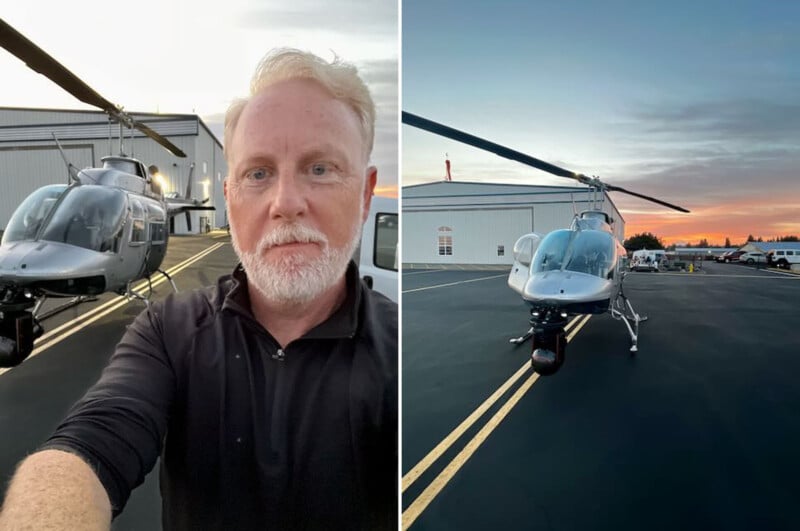
“Curious, I asked him what it was and what he was doing. He explained that it was a helicopter camera mount and that he was heading to the airport to install a camera in a helicopter.”
Miller asked, “Wow, we do that here? Can I go too too?”
Unfortunately, it was after hours, and the company wasn’t willing to pay Miller overtime. He offered to tag along for free because he wanted to learn, and thus began his passion for aerial cinematography.
![]()
Technological Advancements Have Huge Workflow Benefits
“Back then, you couldn’t buy a helicopter camera mount — you could only lease or rent one from a very small list of vendors.”
However, with time, that changed. “The biggest revolution in the industry came around 2004 when Cineflex developed the V-14 HD Gimbal,” Miller tells PetaPixel. “For the first time, you could purchase state-of-the-art equipment, which caused a huge shake-up in the aerial mount industry.”
Future technological innovations arrived, including the arrival of 4K, and, significantly, the arrival of professional drones, like the DJI Inspire 1 about a decade ago.
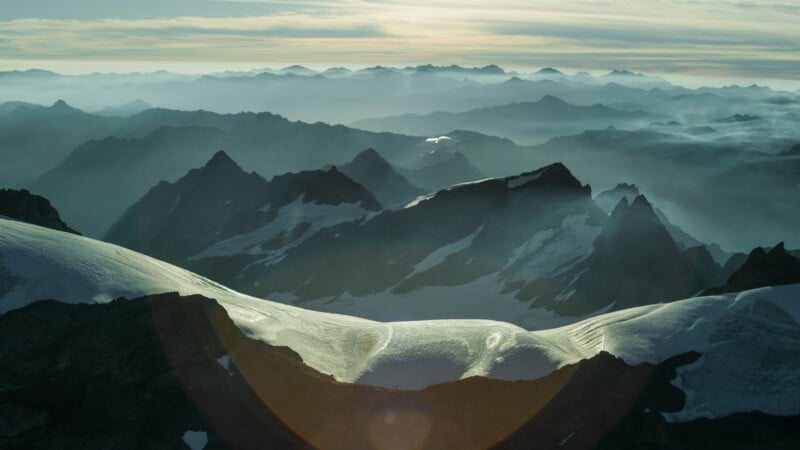
“By 2016, most gimbal manufacturers had perfected horizon lock,” Miller says. “The original Cineflex had a stabilized horizon, but it still drifted, requiring the operator to adjust the horizon while panning to keep it level. After 2016, horizon lock became a must for any gimbal operator. The first time I used horizon lock, it felt like a weight had been lifted. No longer did part of my brain need to be dedicated to the roll axis — I could relax more and focus on panning with the joystick.”
Sometimes, and especially for working pros, the most significant technological advances don’t come down to new sensors or better autofocus or higher resolutions; they come down to features that make it easier for them to create — and for an aerial cinematographer, a steady horizon is a huge deal.
Miller also cites runtime advancements as a considerable change in the field. In 1990, a Tyler Nose Mount Arri 35 III motion picture camera with a 400-foot magazine could shoot just four minutes of film. In 2004, the Cineflex V-14 HD Gimbal Sony 950HD could shoot 30 minutes to tape. These days, RED cinema cameras can easily shoot an hour or more of footage, including at a whopping 8K resolution.
![]()
The Unique Conditions and Challenges of Aerial Cinematography
Although much is different about shooting from the air, including the perspective, some things remain just as accurate in a helicopter as they do with boots on the ground.
“The rule of thirds, like other principles of photography and cinematography, applies to aerial work just as it does to terrestrial camera work,” Miller explains. “The significant difference lies in the environment.”
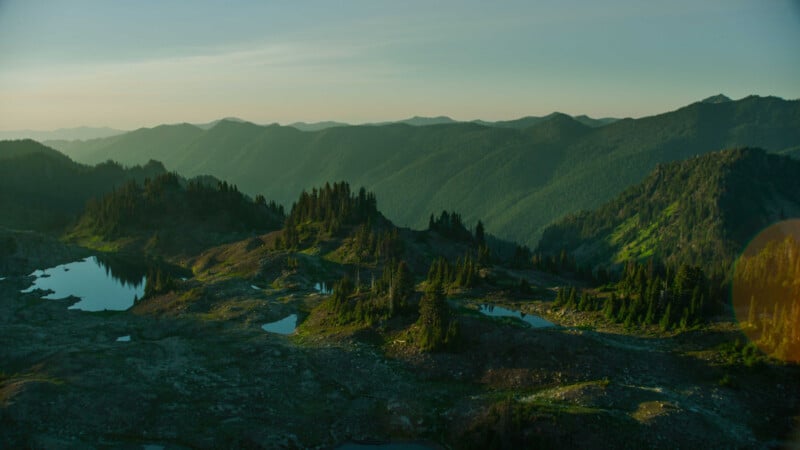
“Just as in any specialized discipline, the key is adapting to the unique conditions — whether it’s the air for aerial photography or the water for underwater photography.”
“Once a photographer adapts to their environment, the real creativity begins,” Miller says. “At that point, they’re no longer just a witness; they become part of that world.”
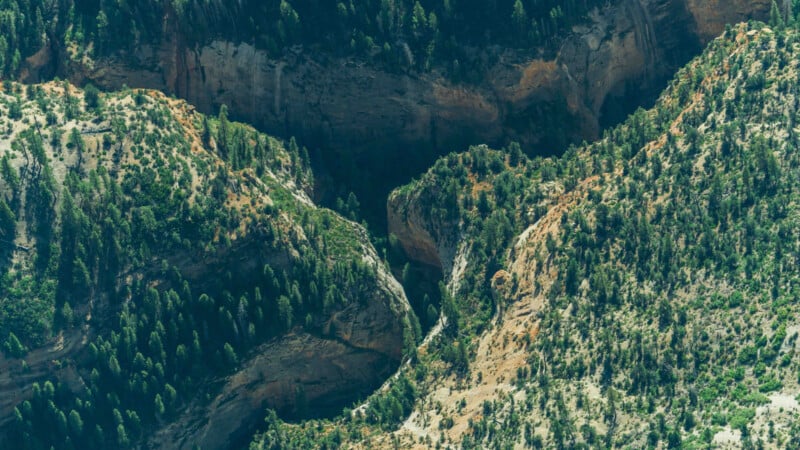
That said, aerial photography does have some distinct rules and narratives, of course. With aerial photography, Miller says he’s focused on the bigger picture and the relationships within that larger scene.
“We lead into scenes, transition between them, and move the story along, providing context to what we’re filming.”
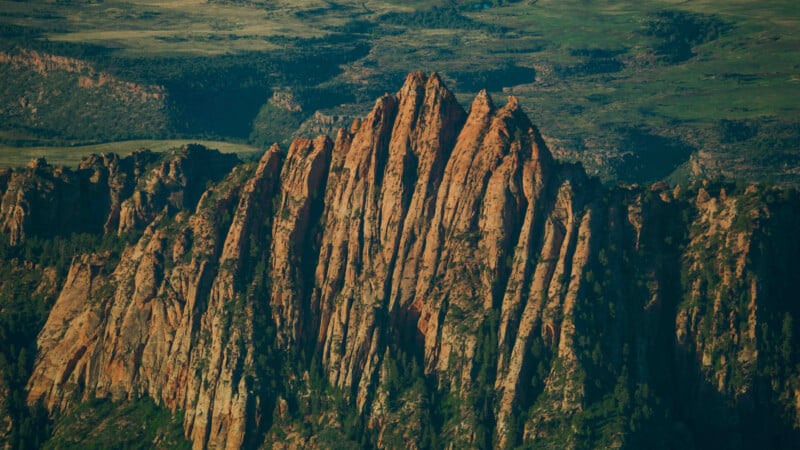
For something like National Parks: USA, Miller’s aerial cinematography provides vital context and helps set up terrestrial scenes. His shots also show familiar sights in totally new ways, showing viewers something they’d never be able to see from the ground.
‘ Once a photographer adapts to their environment, the real creativity begins ‘
These shots do not always come easily. Aerial cinematographer offers significant challenges, including some that terrestrial photographers will undoubtedly understand. Among the biggest are budget, equipment, and weather.
However, aerial photographers like Miller face unique challenges, too, including working with specific helicopter types, pilots, and flight space restrictions.
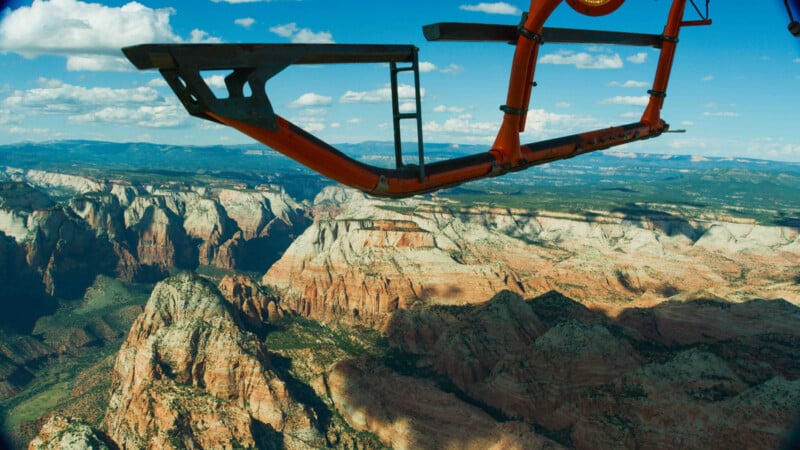
“When I receive a shot list from a director, I can immediately gauge what certain shots will require. If the budget isn’t there, it becomes a real challenge to deliver exactly what’s envisioned,” Miller explains. “This is where I really earn my pay: translating the director’s vision into something that looks dynamic but is also physically achievable with the equipment and helicopter we have at our disposal.”
“As an aerial photographer or cinematographer, you become a student of perspective and a master of three-dimensional space. You’re constantly climbing, circling, moving away while tilting up, or descending, circling, moving forward while tilting down,” Miller says. It sounds dizzying.
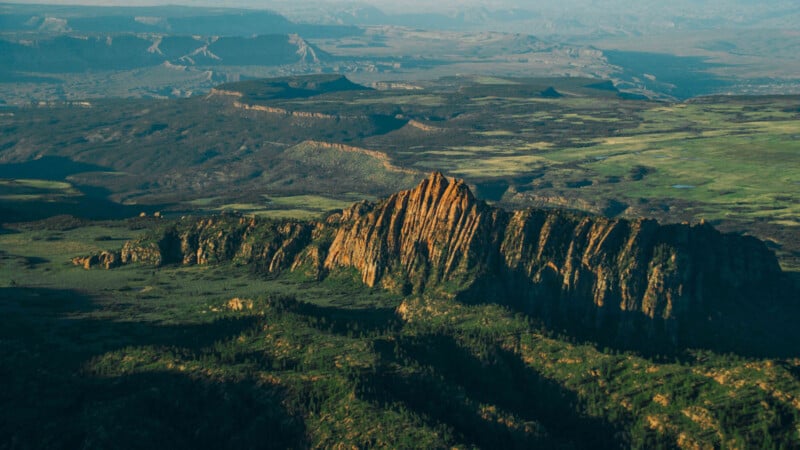
“My lens has to be part of the helicopter’s overall movement, not independent of it. Mastering perspective and three-dimensional space is crucial for conveying a sense of dynamic grandeur to a scene, allowing the audience to fully experience the scale and depth of the environment.”
Miller says his approach to aerial cinematography is “definitely more focused” than his work on the ground. In the air, he is less focused on specific details and more interested in the “broad strokes” of the larger scene. The emphasis is on the “overall scene and its relationship to the environment.”
‘ As an aerial photographer or cinematographer, you become a student of perspective and a master of three-dimensional space.’
“This perspective allows me to convey the vastness and scale of the landscape in a way that’s unique to aerial work.”
Zion and Olympic: The Spectacular View from the Air
National Parks: USA is a five-part series, with each episode focused on a unique National Park. The featured parks include Katmai in Alaska, the Florida Everglades, Yellowstone, Olympic in Washington, and Zion National Park in southwestern Utah. Miller shot in Olympic and Zion.

“The moment we started filming Mount Olympus and the Blue Glacier was just epic,” Miller says of working in Washington. “Jason Moorhead was my pilot, and he got me right on the deck, crawling up the Blue Glacier. It felt like I was a kid in a candy store.”
“However, in moments like that, I have to remind myself not to fall in love with the shots. It’s crucial to stay focused and aware of your framing. When filming mountains and glaciers, it’s easy to get caught up in the grandeur and lose sight of your objectives,” Miller explains.
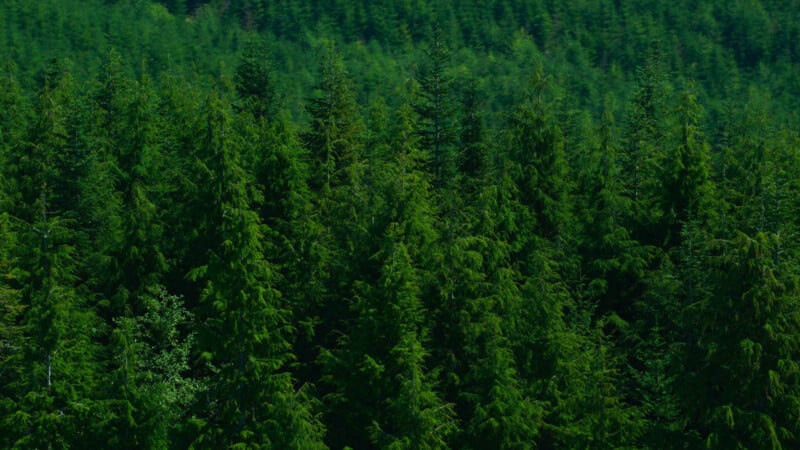
Miller says that viewing the world from above is so different from being on the ground.
“I’ve found there’s a distinct disconnect between the ground and aerial perspectives. It’s like the difference between walking or riding your bike through a neighborhood and then driving a car. The two experiences don’t connect in the same way — they feel like different worlds.”
‘ It felt like I was a kid in a candy store.’
Although a seasoned, award-winning aerial cinematographer, Miller appreciates seeing things from a more typical perspective.
“There’s something uniquely wonderful about seeing the same areas from the ground. It’s a different kind of connection, one that’s more intimate and grounded but no less profound.”

And Miller has seen a lot of fantastic locations from a helicopter. In 2007, he embarked on a project that took him to all 50 states and numerous American territories.
“Over the course of nine years, I spent more than 4,000 hours in helicopter flight time working on this project. The show was Aerial America on the Smithsonian Channel,” Miller says. It was the most expansive aerial show ever, and Miller describes it as an “absolute dream job.”
While on many shows and movies, only a fraction of his shots make it into the final cut, something he says he’s grown used to. However, for Aerial America, the final production was 100% his work.
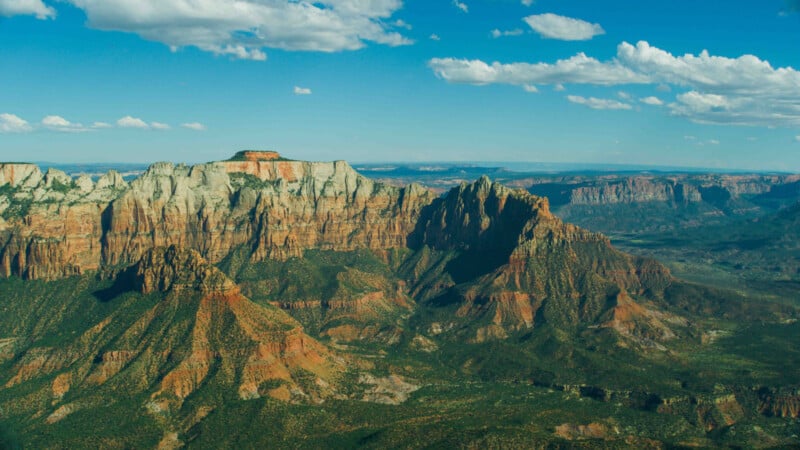
Drones Have Changed the Game But Aren’t a Substitute for Being in the Air
While much of Miller’s work still involves being in a helicopter — there’s no substitute for it — he does use drones. They’re an integral part of his kit, and he’s a certified Part 107 remote pilot.
“I started operating drones in 2015 with my Alta 8 Octocopter and in 2017 with the DJI Inspire 2. Today I work with the Inspire 3 and Mavic 3 Pro Cine,” Miller says.
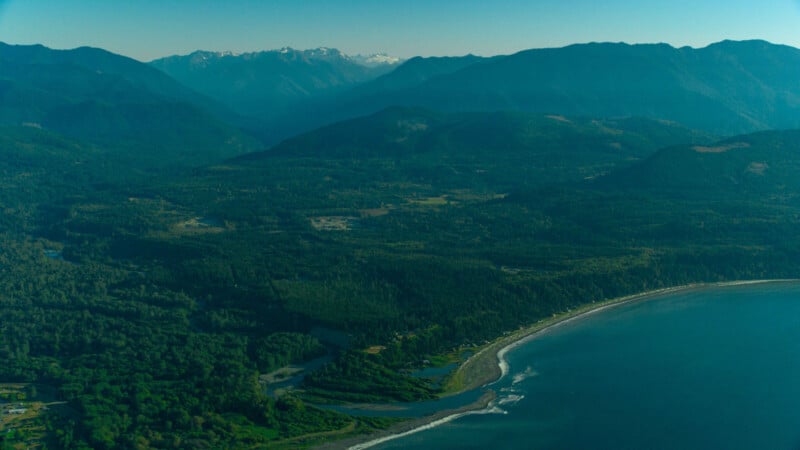
While Miller admits drones are excellent, he says that to be a true aerial cinematographer, you need to physically take to the skies.
“There’s no doubt that cinematographers can create stunning aerial scenes [with drones], but that doesn’t make you an Aerial Cinematographer. It’s similar to using a remote submersible drone to fim underwater shots — that wouldn’t make you an underwater cinematographer.”
“To truly be an Aerial Cinematographer, you need to live in the environment.”
Miler likens drones to an extension of an existing cinema kit, like a dolly or crane.
“There’s something irreplaceable about being up in the air, experiencing the environment firsthand, and capturing that perspective.”
Drones are still important for beginners who want to become an aerial cinematographer. Miller recommends getting a remote pilot license and learning to fly a drone.

“But don’t stop there. Get in touch with companies like GSS and Shotover, and take a course on the different gimbal systems.”
Learning to tell a visual story is crucial to every type of cinematography, but each domain has its own workflow and visual language. Miller offers an illustrative example.
“If a director asked me to film the Golden Gate Bridge from the air, these are the shots I would need to successfully tell that aerial story.”
“1. The Reveal: I’d start by revealing the bridge from the Marin Headlands, which also showcases the city of San Francisco in the background. In just a couple of seconds, this shot not only reveals the Golden Gate Bridge but also situates it geographically, telling the audience exactly where in the world this iconic structure is.”
“2. Circling the Towers: Next, I’d circle both the north and south towers. These can be long takes that either reveal the city or show details of the cars below, providing time for the narrator to discuss the bridge.”
“3. Approach Shots: I’d include approach shots, coming in diagonally from the southwest, southeast, northwest, and northeast. These are longer approaches, giving the editor flexibility to cut in and out as needed.”
“4. Detail Shots: After that, I’d focus on details — close-ups of the suspension cables, towers, center anchor, and toll plaza. These shots provide a wealth of editorial options, which will make the editor love you.”
“5. Wider Context Shots: On the way back to land, I’d capture a shot of the bridge with Alcatraz in the foreground, followed by another shot from the city with the Golden Gate in the distance.”
“In this approach, I’d ensure that I’m revealing the subject, giving plenty of visual time on screen, and showing natural and man-made landmarks in relation to the bridge to emphasize scale and placement. I’d also vary the altitude, capturing shots from 20 feet to 3,000 feet, something you can easily do in a helicopter. That’s the art of aerial cinematography.”
National Parks: USA
Thomas C. Miller’s expertise and experience are on full display in National Parks: USA, which is now airing in full on Nat Geo on television and available to stream on Disney+.
Image credits: All images provided courtesy of Thomas C. Miller. ‘National Parks: USA’ airs on National Geographic and is available to stream on Disney+.
